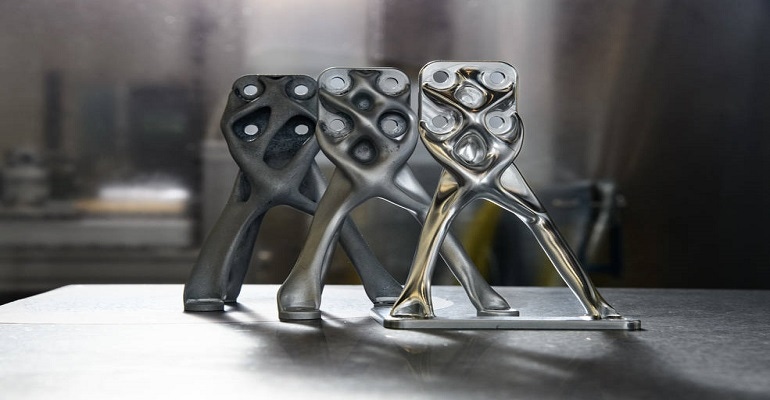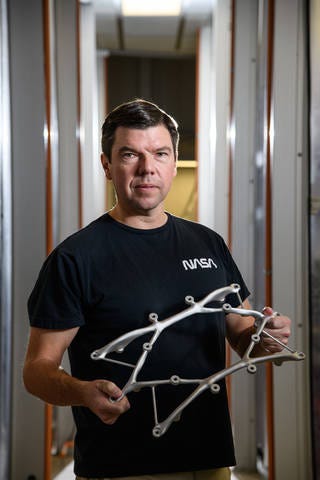AI Steps into Space with Part Design and Smart Exploration
NASA is creating AI-designed parts while the European Space Agency searches for life-friendly planets using AI.
March 27, 2023

Space programs have become early movers in the use of artificial intelligence, both at NASA and the European Space Agency. At NASA, Research Engineer, Ryan McClelland, has used commercially available artificial intelligence software to create one-off parts at Goddard Space Flight Center in Greenbelt, Maryland. He calls the resulting parts "evolved structures." NASA’s Jet Propulsion Laboratory is using AI to design parts for space vehicles.
In a blog by NASA editor Karl Hille, McClelland explained that creating these parts begins with using CAD to draw the mission’s requirements on the surfaces where the part connects to the instrument or spacecraft. The requirements include any bolts or fittings for electronics and other hardware. The engineer might also need to block out a path so that the algorithm doesn’t block a laser beam or optical sensor. The more complex builds might require room for technicians’ hands to maneuver for assembly and alignment. Given the requirements, the AI software generates the most efficient designs possible without reducing the part's strength.

The design process is also fast. McClelland noted that NASA engineers can produce complex structure designs in as little as an hour or two. “The algorithms do need a human eye,” said McClelland in a statement. “Human intuition knows what looks right, but left to itself, the algorithm can sometimes make structures too thin." McClelland noted that these evolved structures can save up to two-thirds of the weight compared to traditional components. “You can perform the design, analysis, and fabrication of a prototype part, and have it in hand in as little as one week.
McClelland’s evolved components have been adopted by NASA missions in different stages of design and construction, including astrophysics balloon observatories, Earth-atmosphere scanners, planetary instruments, space weather monitors, space telescopes, and the Mars Sample Return mission.
Goddard physicist Peter Nagler used evolved structures to develop the EXoplanet Climate Infrared TElescope (EXCITE) mission, a balloon-borne telescope developed to study hot Jupiter-type exoplanets orbiting other stars. EXCITE plans to use a near-infrared spectrograph to perform continuous observations of each planet's orbit about its host star.
Lightweighting with AI
NASA Jet Propulsion Laboratory uses AI software to create parts that are lighter than traditionally manufactured parts while matching or exceeding structural requirements. Generative software from companies such as Autodesk can take weight out of space vehicles. The weight reduction creates opportunities to include more instruments in the vehicle. AI-based generative software can reduce weight by 30% to 35%.
The European Space Agency Explores AI
The European Space Agency is beginning to use AI in satellite operations. The software supports the operation of large satellite constellations, including relative positioning, communication, and end-of-life management.
The agency is also looking at using AI to help in space exploration through machine learning (ML). AI can teach machines to learn for themselves. ML is a way of training a relatively simple algorithm to become more complex. Huge amounts of data are fed into the algorithm, which adjusts and improves itself over time. With ML, machines process information in a similar way to humans by developing artificial neural networks.
This type of artificial intelligence has moved forward in a process called deep learning (DL). This is a technique within ML, where the machine utilizes multi-layered artificial neural networks to train itself on complex tasks like image recognition. This can happen via supervised learning where an engineer feeds the system Moon and Earth pictures until it can successfully identify both types. Or it can involve unsupervised learning, where the network finds structure by itself.
About the Author(s)
You May Also Like





